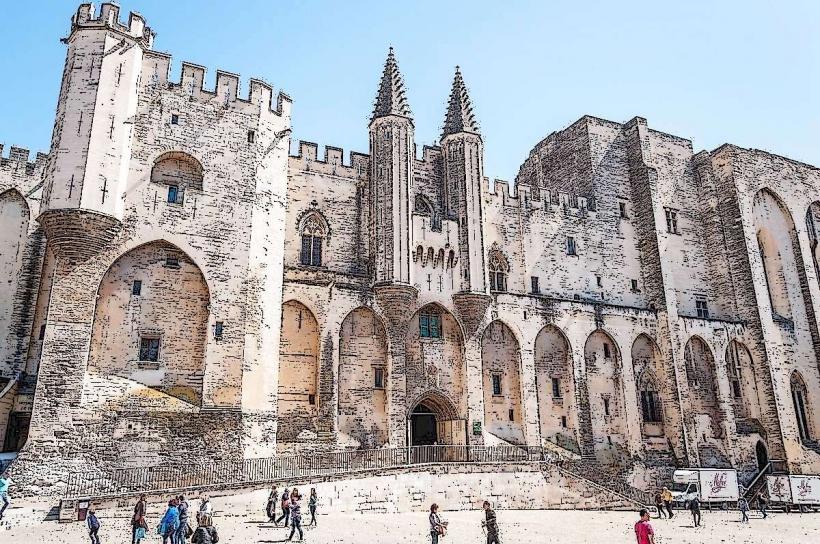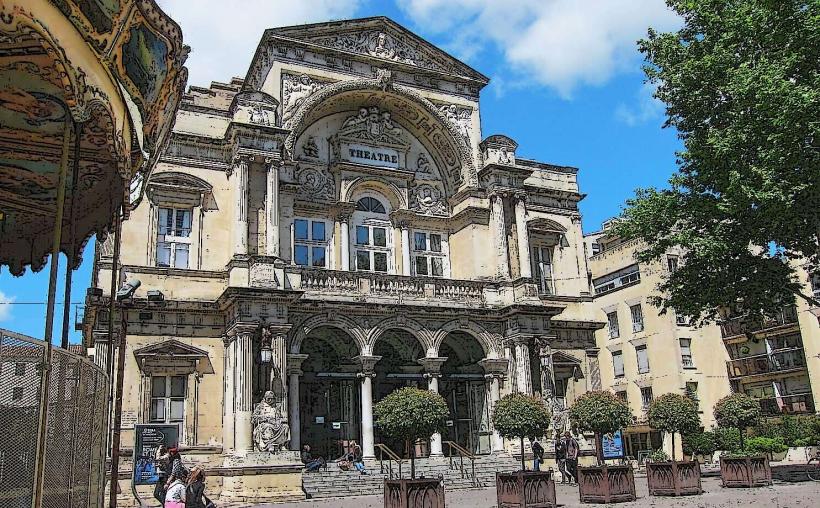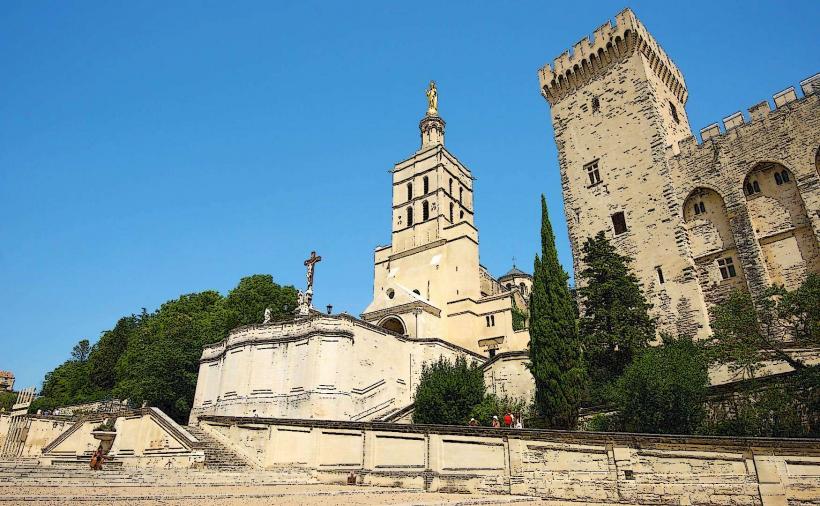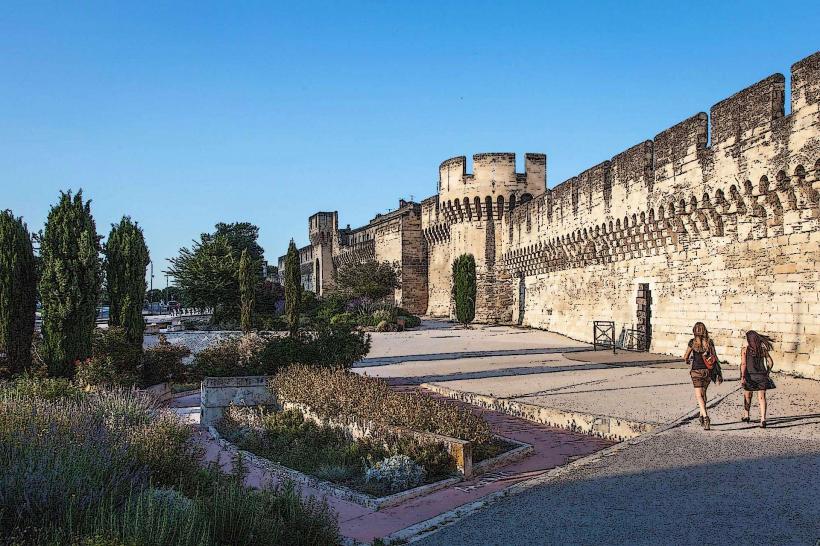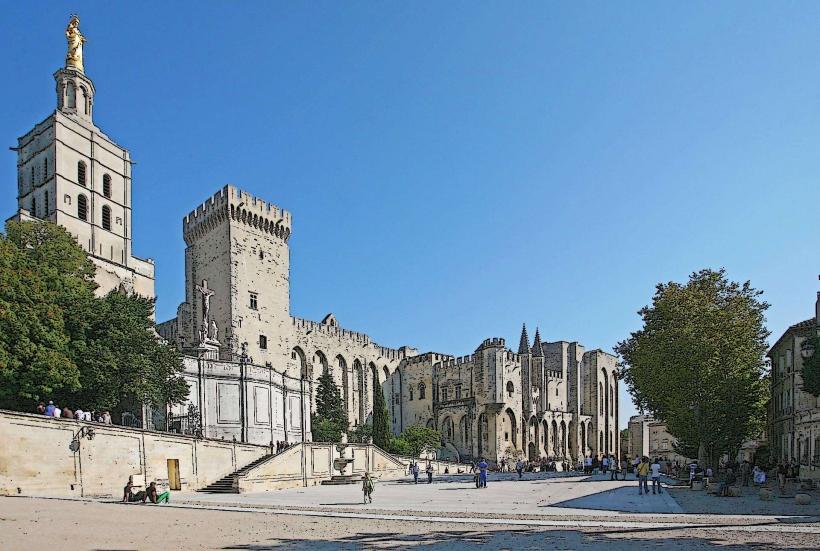Information
City: AvignonCountry: France
Continent: Europe
Avignon is a historic city located in the Provence-Alpes-Côte d'Azur region in southeastern France, along the Rhône River. Known for its remarkable medieval architecture, rich history, and vibrant culture, Avignon is a UNESCO World Heritage site that attracts visitors with its fascinating landmarks and connections to the Catholic Church and European politics.
Here’s a detailed overview of Avignon:
1. History of Avignon
Avignon has a long and illustrious history, dating back to ancient times, with its strategic location along the Rhône River making it an important crossroads for trade and politics.
Roman Era: Avignon, known in Roman times as Avenio, was part of the Roman Empire and served as a key settlement in the region. It was an important city for trade and defense during this period.
Medieval Period and Papal Influence: The city's most famous historical era occurred in the 14th century when it became the seat of the papacy. From 1309 to 1377, the popes resided in Avignon, a period known as the Avignon Papacy. This significantly shaped the city’s development and left a legacy of stunning architecture and religious significance. The popes moved the papacy from Rome to Avignon due to political turmoil, and the city remained the center of the Catholic Church until the return of the papacy to Rome.
Post-Papal Era: After the papacy returned to Rome, Avignon was controlled by various rulers and became part of France in 1791 during the French Revolution. The city continued to flourish as a cultural and political center in subsequent centuries.
2. Key Landmarks and Attractions
Avignon is home to several iconic landmarks, many of which reflect its medieval past, its role as a papal city, and its connection to the arts.
Palace of the Popes (Palais des Papes): The Palace of the Popes is one of the most famous and imposing medieval buildings in Europe. This vast, fortified palace served as the residence of the popes during the 14th century, when the papacy was based in Avignon. The palace features gothic architecture with magnificent rooms, chapels, and courtyards. Visitors can explore the Grand Chapel, the Papal apartments, and the hall of Consistory. The Palace of the Popes is a UNESCO World Heritage site and is one of the top attractions in Avignon.
Pont Saint-Bénézet (Pont d’Avignon): The Pont Saint-Bénézet is a famous medieval bridge spanning the Rhône River, built in the 12th century. The bridge is known for its ruined state, as only four of its original 22 arches remain today. It is the subject of the famous French song "Sur le pont d'Avignon," which celebrates the bridge and its historical significance. The remaining sections of the bridge can be visited, and it offers stunning views of the river and the city.
Avignon Cathedral (Cathédrale Notre-Dame des Doms): Located next to the Palace of the Popes, the Avignon Cathedral is a beautiful example of Romanesque architecture. The cathedral, dedicated to Our Lady, was built between the 12th and 15th centuries. Its golden statue of the Virgin Mary on the dome is a prominent feature visible from a distance. The interior of the cathedral contains stunning frescoes and medieval sculptures, making it a key part of Avignon’s religious heritage.
Place de l'Horloge and Town Hall (Hôtel de Ville): The Place de l'Horloge is the heart of Avignon’s old town, and it is one of the city’s most lively squares. The square is lined with cafés, restaurants, and historic buildings, including the Hôtel de Ville, or Town Hall, which dates back to the 16th century. The square is named after the clock tower of the town hall, and it is a great place to soak in the atmosphere of the city.
Rocher des Doms (Rock of the Doms): The Rocher des Doms is a hilltop park that offers panoramic views of the city, the Rhône River, and the surrounding landscapes. The park is named after the Doms, who were the first religious leaders in the area. Today, it is a tranquil spot with fountains, gardens, and statues, perfect for a peaceful walk while enjoying the stunning views.
Avignon City Walls: The city walls of Avignon are one of the best-preserved examples of medieval fortifications in France. Built in the 14th century to protect the city during the time of the papacy, the walls stretch for about 4.3 kilometers and feature 39 towers. Visitors can walk along the walls or visit the towers for fantastic views of the city and the surrounding countryside.
Musée du Petit Palais: The Musée du Petit Palais is an art museum housed in a 15th-century palace. The museum features an impressive collection of Italian Renaissance paintings, including works by Giotto, Botticelli, and Piero della Francesca. It also holds a collection of sculptures and medieval art, providing insight into the artistic heritage of the region.
Musée Calvet: This museum is located in a 17th-century mansion and is dedicated to fine arts. It houses a collection of paintings, sculptures, and decorative arts spanning several centuries. The museum’s collections cover a wide range of periods, from Renaissance to modern art, and include works by artists like Rembrandt and Van Gogh.
Château de Fargues: The Château de Fargues is a historical mansion located just outside the city, known for its beautiful gardens and vineyards. It is a great place for visitors who want to explore the region's wine heritage and enjoy a peaceful retreat from the bustling city.
3. Festivals and Cultural Events
Avignon is known for its vibrant cultural scene and world-class festivals. Some of the most notable festivals include:
Festival d'Avignon: One of the most prestigious theater festivals in the world, the Festival d'Avignon takes place every July. The festival features theater productions, dance performances, and street performances across the city. It draws artists and audiences from all over the world and is a celebration of the performing arts.
Les Chorégies d'Orange: Held in nearby Orange, this annual opera festival features performances in the ancient Roman Theater, a UNESCO World Heritage site. It is one of the largest opera festivals in Europe and takes place in the summer.
Avignon International Dance Festival: This annual dance festival showcases contemporary and classical dance performances and attracts dancers and choreographers from around the world.
4. Cuisine and Local Food
Avignon is a fantastic destination for food lovers, offering a mix of Provençal and Mediterranean cuisines. The city is known for its delicious olive oil, herbs, garlic, and fresh vegetables. Some local dishes include:
- Bouillabaisse: A fish stew made with various types of fish and shellfish, traditionally served with rouille (garlic mayonnaise).
- Tapenade: A spread made from olives, capers, and anchovies, often served with bread or crackers.
- Ratatouille: A hearty vegetable stew made with eggplant, zucchini, tomatoes, and peppers.
- Côte du Rhône Wine: The Côte du Rhône region surrounding Avignon is known for its excellent wines, particularly red wines made from Grenache and Syrah grapes.
5. Transportation
Avignon is well connected by train, road, and air:
- By Train: Avignon is easily accessible by TGV (high-speed train) from Paris and other major French cities.
- By Air: Avignon-Provence Airport serves the city with flights from Europe and is located about 10 kilometers from the city center.
- By Car: Avignon is connected to the A7 highway, which connects the city to Marseille, Lyon, and Paris.
6. Conclusion
Avignon is a city rich in history, culture, and architecture. From the monumental Palace of the Popes to the stunning medieval Pont Saint-Bénézet, the city offers visitors a chance to immerse themselves in its unique past and vibrant present. Whether you’re exploring its historic sites, enjoying its lively festivals, or tasting its delicious regional cuisine, Avignon is a must-visit destination for travelers to Provence.

